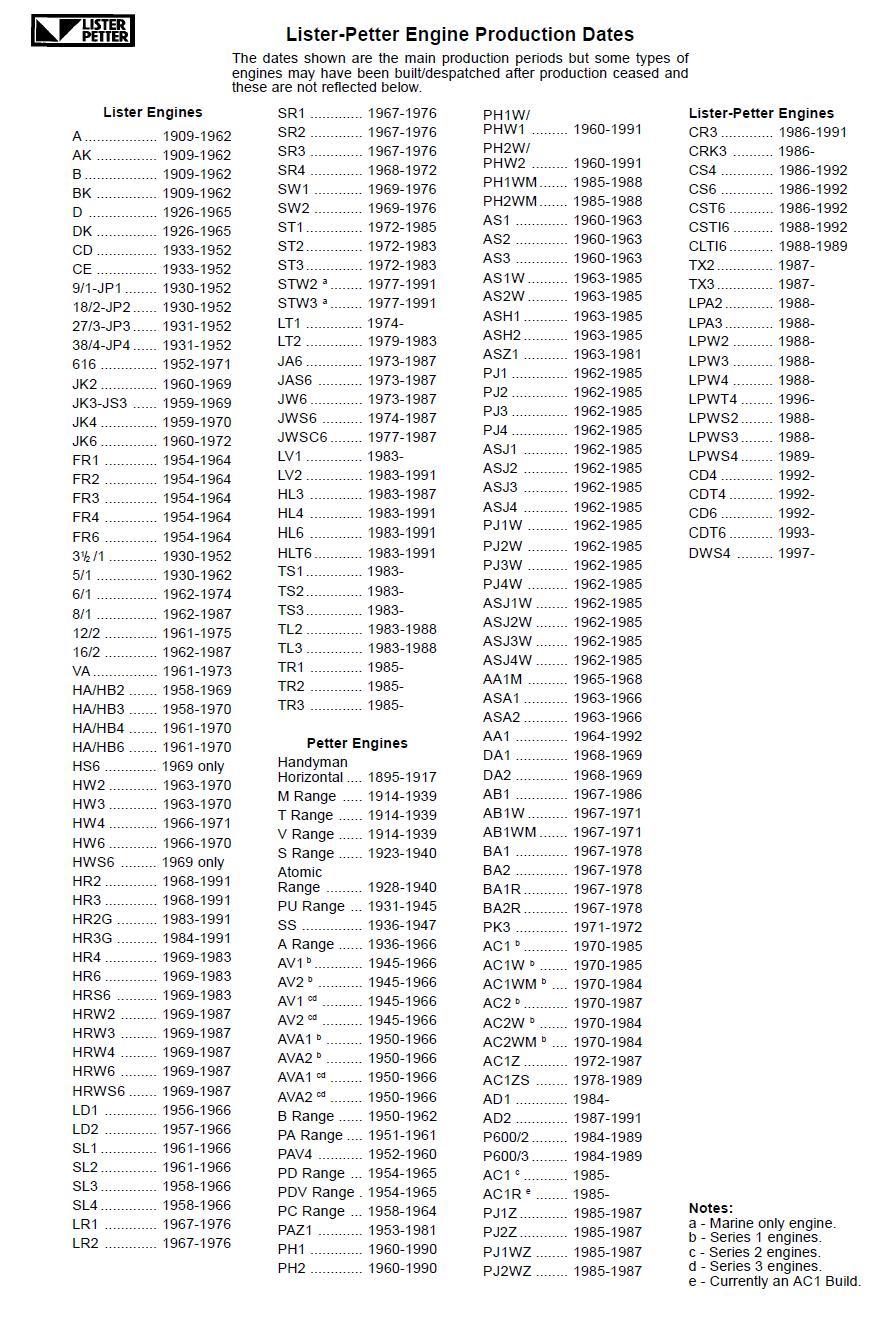
Lister Engine Serial Numbers
Contents • • • • • • • • • • • History [ ] 1867-1906: Foundation and growth [ ] The founder of R A Lister and Company was Robert Ashton Lister, who was born in 1845. He led the exhibit of the family's products to the, but on return fell out with his father, [ ] and in the same year founded R.A.Lister and Company in the former Howard's Lower Mill, Water Street in to manufacture agricultural machinery. In 1889 Robert acquired the UK rights to manufacture and sell engineer 's new, which through a spinning centrifugal separator allowed the machine to run at a constant speed and hence create a regular consistency of cream.
T-Range Engine. The rugged TR engine is a proven performer for Lister Petter. With its simple air cooling system and hand starting facility it is the ultimate engine to operate in the harshest of environments.
Marketed in the UK and British Empire as 'The Alexandra Cream Separator', its success resulted in Pedersen moving to Dursley. In 1899, he founded the Cycle Company with Ashton Lister. Robert was a pioneer of business in, and took the first cream separator in that region over the plains of in a journey made by horse buggy. By the early 1900s, R.A.
Zadevni trg je majhen ter zajema sisteme in sestavne dele, ki se uporabljajo skoraj izključno za upravljanje zračnega prometa in niso namenjeni splošni javnosti; zato bi bilo pretirano nameščati znak CE na sestavne dele, saj na podlagi ocene skladnosti in/ali primernosti za rabo zadostuje proizvajalč e v a izjava o skladnosti; t o ne bi smelo vplivati na obveznosti proizvajalcev, da znak CE namestijo na nekatere sestavne dele za potrditev njihove skladnosti z drugo zakonodajo Skupnosti v zvezi z njimi. Spravka o balansovoj stoimosti objekta obrazec e.
Listers had redesigned Pedersen's cream separator, expanded its lines of machinery, was producing and wooden barrels for, and from the off-cuts developed a successful line of wood-based. 1907-1928: Petrol engines [ ] In 1909 the company acquired manufacturing rights from the -based firm of F.C.
Southwell & Co. For their design of petrol-driven engines (derived from the design of a range of imported engines made by the U.S. During, the factory was focused solely on production, producing petrol engines, lighting sets and munitions. Many of the men left for the front, meaning that a large portion of the workforce was female. After the war, Sir Robert Lister retired and turned management at Dursley over to his grandsons (sons of Charles Ashton Lister CBE) Robert, Frank, Percy and George together with A. Charles Ashton Lister managed the company's business in North America and was based in Canada. George managed home sales and Frank was in charge of buying, while Cecil did not have a clearly defined role at all, and, although Robert was the eldest, it was Percy (later Sir Percy) who had by far the most significant impact.
Developing foreign competition meant that the manufacturing of milk churns and barrels ceased, and the over supply of second-hand ex-military engines and lighting sets reduced the company's profit considerably. The company was eventually turned round under Percy's control, aided by the introduction in 1926 of the, used to move goods around factories, railway stations and dockyards the world over; production continued until 1973. Programma optimizacii raskroya brevna.

As managing director Percy led the firm through a period of significant growth and prosperity in the 1920s and 1930s. By 1926 the workforce was around 2000 and was growing rapidly; the company ran a 24-hour manufacturing operation, expanding its range of products and supplying retailers to around 6000 UK customers and many more worldwide. Retailing revenues were particularly healthy in Australia and New Zealand, where sheep-shearing equipment was in great demand. 1929-1945: Diesel engines [ ] In 1929, Sir Robert died at the age of 84, and in the same year the first of Lister's own design of 'CS' (cold start) diesel engine was made. With one cylinder and producing 9 horsepower (6.7 kW), it became known as the Lister 9-1. This was quickly followed by the 5-1, 10-2, 18-2 and 38-4, all in 1930; the 27-3 in 1931; and 3-1, CD and CE in 1933. Lister engines were traditionally painted a mid-range shade of, which continues to be used today.